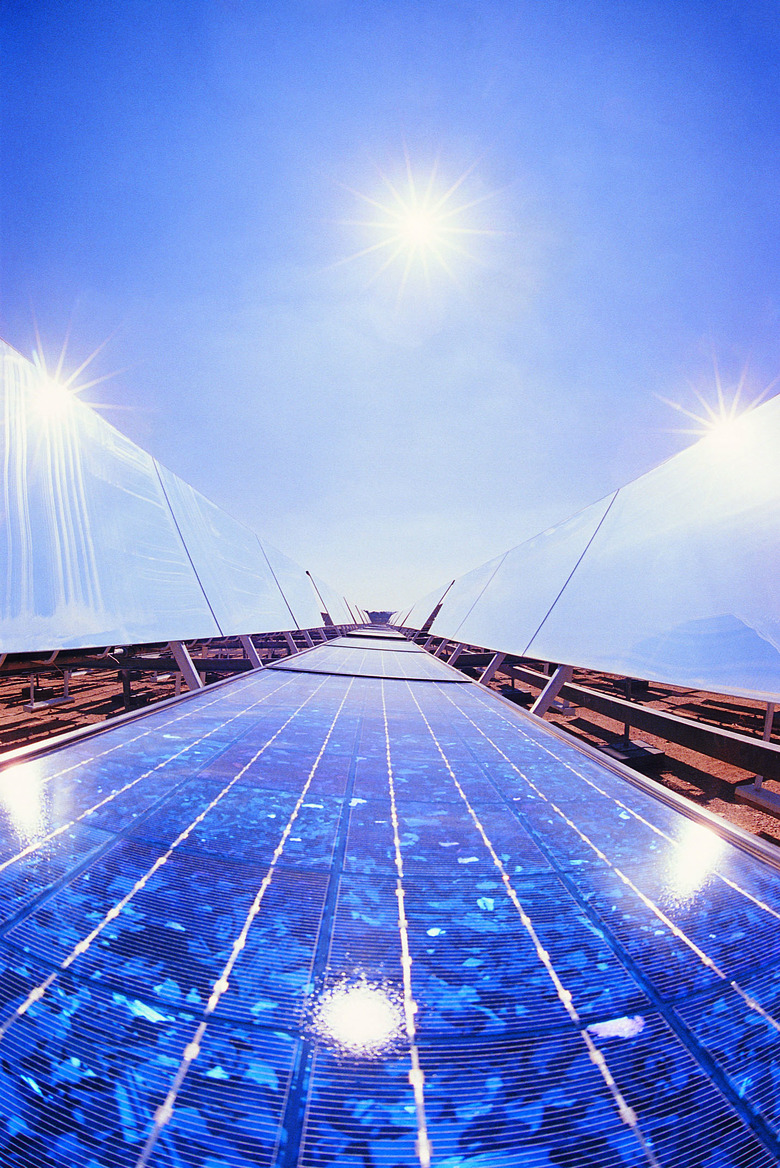Are Solar Panels Viable In The Pacific Northwest?
Solar panels can produce energy wherever there is light. Even the cloudy, forested Pacific Northwest is a viable location for solar panels. In order to get the most out of a solar panel system in the Pacific Northwest, you must consider the positioning of the system, your power needs and the different wiring possibilities.
Positioning Your Panels
Positioning Your Panels
Solar panels produce maximum power when they are perpendicular to the incoming sunlight. However, the sun moves across the sky during the day. Therefore, it is difficult to obtain a nearly perpendicular angle for an extended period of time. Furthermore, the sun reaches different high points in the sky depending on the season. You can alter your solar panel's position throughout the year to account for this. However, if this isn't possible, you should position your panel so that the angle it makes with the horizon is equivalent to your latitude minus 15 degrees. For example, the latitude of Eugene, Oregon, is 44 degrees north. Therefore, you should angle a solar panel at 29 degrees. Furthermore, since the Pacific Northwest is in the Northern Hemisphere, the sun will be in the southern sky. Therefore, your panels should face south. Lastly, make sure you select a site for your panels that is relatively clear of trees. If a tree shades a panel, your system will produce less power.
The Cold, Cloudy Northwest
The Cold, Cloudy Northwest
While cloud cover decreases solar panel output, the Pacific Northwest is still a viable location for solar power. In fact, 100 square feet of solar panels rated at 1,000 kilowatts of output power can produce 1,250 kilowatt hours of annual power east of the Cascade Mountains. Locations west of the Cascade Mountains might produce slightly less power — around 1,000 kilowatt hours on a similar system. This is still a useful amount of power. One of the factors that contributes to the Pacific Northwest solar potential is the cooler average temperature. Solar panels produce more power in cooler temperatures. Therefore, even with the notoriously cloudy weather, a solar system can generate a good amount of power in the Pacific Northwest.
How Much Do You Need?
How Much Do You Need?
The average home might use anywhere from 5,000 to 8,000 kilowatt hours of power annually, or 14 to 22 kilowatt hours daily. The average power output per square foot of a solar panel system in the Pacific Northwest translates to about 500 to 800 square feet of solar panels. These numbers will vary based on your household's usage habits. Ultimately, a solar panel system in the Pacific Northwest can produce as much energy as the typical household would need. If your household average energy use is above average, you should take steps to reduce your energy consumption in order to save on the cost of solar system installation.
Relying on the Grid
Relying on the Grid
If you have apprehensions about a standalone solar power system in the Pacific Northwest, you can set your mind at ease with a grid-tied system. A grid-tied system sends the power it generates to a main power grid. The power company credits you for any excess solar power your system generates. If your system is not generating enough power, you can use power from the grid. Hence, this arrangement can be a fail-safe for less optimal solar power sites or occasions.
Cite This Article
MLA
Murmson, Serm. "Are Solar Panels Viable In The Pacific Northwest?" sciencing.com, https://www.sciencing.com/solar-panels-viable-pacific-northwest-7357/. 24 April 2017.
APA
Murmson, Serm. (2017, April 24). Are Solar Panels Viable In The Pacific Northwest?. sciencing.com. Retrieved from https://www.sciencing.com/solar-panels-viable-pacific-northwest-7357/
Chicago
Murmson, Serm. Are Solar Panels Viable In The Pacific Northwest? last modified March 24, 2022. https://www.sciencing.com/solar-panels-viable-pacific-northwest-7357/
